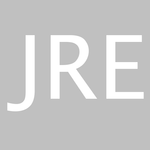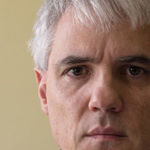 Adobe Community
Adobe Community
- Home
- Lightroom Classic
- Discussions
- Re: Is it possible to add/intersect created masks?
- Re: Is it possible to add/intersect created masks?
Copy link to clipboard
Copied
I was processing a photo with two birds on a pond. The birds needed different "basic" editting, and both birds needed different editting from the background -- a perfect application of masks. So I set out to create a mask for bird1, a mask for bird2 and a mask for the background. The approach I thought would work was to
- create a mask a Subject component, which, as I hoped, identified both birds, and rename the mask bird1
- duplicate bird1 and rename the duplicate bird2
- duplicate bird1, invert the duplicate, and rename the duplicate background
- create a mask component in bird1 to remove the second bird
- create a mask component in bird2 to remove the first bird
At this point I have 3 masks, one for the first bird (bird1), one for the second bird (bird2), and one for the background (background). And I can accomplish the original task of editting them independently.
However, I wondered about a different approach:
- create a mask with and Object component, with the first bird identified, and rename it bird1
- create a mask with and Object component, with the second bird identified, and rename it bird2
- duplicate bird1 and "add" bird2, invert the mask, rename it background
Seems like fewer steps to achieve the same goal.
Unless I'm missing something, LrC has no ability to "add" a "high level" mask (i.e., one created with the "New Mask" button, that can have multiple components). Of course, there is also on ability to "subtract" or "intersect" either. I feel that this would add tremendous flexibility to the creation of masks, and maybe make it more efficient.
Am I missing something? Is there a better way to do what I want to do? I have to confess this is not the first time I've wanted to add, subtract, or intersect "high level" masks.
Thanks.
 2 Correct answers
2 Correct answers
You can duplicate a mask component and then drag it into another mask. Then you can convert that copied component to Subtract or invert it. See the attached screen recording for an example.
As a general comment: it is not necessary to have both an A mask and an everything-but-A mask, in order to see differing processing on A than on the rest of the picture. You can still use global adjustments for the generality including A, then adjust the A area with a relative adjustment in response. Say you want the A area a bit warmer and lighter than it otherwise would be: now you can alter the global controls and A is still that much warmer and lighter than it otherwise would be. So the same
...Copy link to clipboard
Copied
Copy link to clipboard
Copied
Thanks much! I had no idea one could move components into a different "high level" mask. I was focused on the "high level" because a complete "high level" mask typically (for me) contains a subject or object component and then two brush components. But, I can perform the same copy/move steps for all components. Not sure if it saves some steps over the subject based approach in my original post, but now I have some options.
Again, thanks much!
Copy link to clipboard
Copied
As a general comment: it is not necessary to have both an A mask and an everything-but-A mask, in order to see differing processing on A than on the rest of the picture. You can still use global adjustments for the generality including A, then adjust the A area with a relative adjustment in response. Say you want the A area a bit warmer and lighter than it otherwise would be: now you can alter the global controls and A is still that much warmer and lighter than it otherwise would be. So the same differential processing / rebalancing is maintained even though you've only updated one set of adjustments, and not two.
A local adjustment simply opposed against global adjustment can often be quite loosely and softly defined, in practice. But tightly abutting 'patchwork approach' mask areas are more finicky - being prone to more apparent overlaps, and/or gaps between, with any later spot-healing or whatever in the area of their junction.
Copy link to clipboard
Copied
That makes a lot of sense. And it could reduce the work involved. I'll have to experiment with some photos I've already processed. Thanks!
Copy link to clipboard
Copied
"You can still use global adjustments for the generality including A, then adjust the A area with a relative adjustment in response."
Agreed, I often do that. But sometimes it bites me, because later I go back later to adjust the global adjustment and then find myself having to tweak the local adjustment again.
Copy link to clipboard
Copied
"having to tweak the local adjustment again" (after changing global adjustments which affect the area of that local adjustment) - sure, and the same would happen if these were overlapping local adjustments instead. But IMO that wouldn't argue for using non-overlapping adjustments only.
Our visual brains assess colours and tones against their nearby context and through their inter-relationships, not absolutely. We will disregard (see through) even quite strong general colour casts or differences of WB - provided the representation is internally coherent. But if parts of a picture evidence one colour cast while other parts evidence a different enough colour cast - it breaks apart aesthetically. I find global adjustments are key to keeping all the parts of a photo subtly related - underlying any locally applied tweaks - and thus resisting that outcome.
Copy link to clipboard
Copied
'"high level" mask.'
Adobe has created needless confusion over its sloppy, ambiguous masking terminology, using different terms in the LR UI, documentation, blog posts, and the plugin SDK. Adobe told Lightroom Queen Victoria Bampton last year to use "mask" for the thing made by the Create Mask command and "mask component" for the thing that resides inside a "mask" (Object, Brush, Linear/Radial Gradient, etc.). So that's the terminology many of us have decided to use. See this thread for details:
https://www.lightroomqueen.com/community/threads/mask-terminology.44199/

